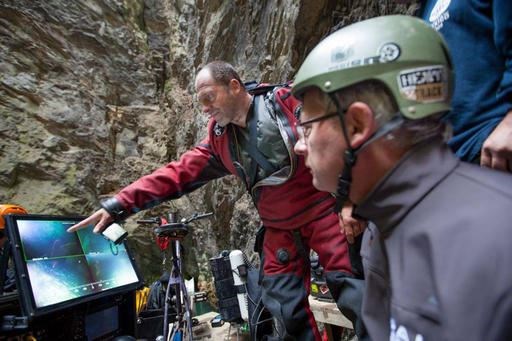 |
| In this photo taken Sept. 27, 2016 in the flooded Hranicka Propast, or Hranice Abyss, in the Czech Republic Polish explorer Krzysztof Starnawski, left, and Bartlomiej Grynda, right, are reading images from a remotely-operated underwater robot, or ROV, that went to the record depth of 404 meters ,1,325 feet, revealing the limestone abyss to be the world's deepest flooded cave, during the 'Hranicka Propast - step beyond 400m' expedition led by Starnawski and partly funded by the National Geographic. (AP Photo/ Marcin Jamkowski) |
WARSAW, Poland (AP) — A team of explorers say they've discovered that a cave in the eastern Czech Republic is the world's deepest flooded fissure, going at least 404 meters (1,325 feet) deep.
Polish explorer Krzysztof Starnawski, who led the team, told The Associated Press on Friday that he felt like a "Columbus of the 21th century" to have made the discovery near the Czech town of Hranice.
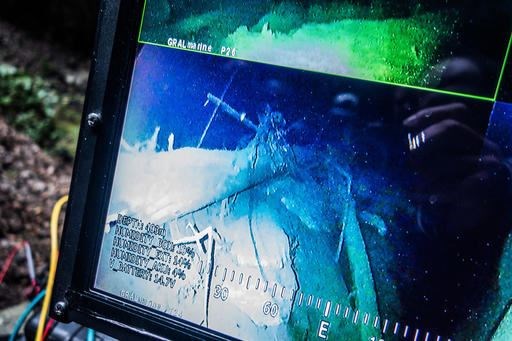 |
| In this photo taken Sept. 27, 2016 in the flooded Hranicka Propast, or Hranice Abyss, in the Czech Republic is pictured the screen of a remotely-operate underwater robot, or ROV, indicating it has reached the depth of 403 meters (1322.18 feet) in the cave, revealing it to be the world's deepest known flooded limestone sinkhole, during an expedition led by Polish explorer Krzysztof Starnawski. The robot went to the depths of 404 meters, the length of its cord, but appeared not to have reached the bottom,,during the 'Hranicka Propast - step beyond 400m' expedition that was partly funded by the National Geographic. (Krzysztof Starnawski Expedition via AP) |
Starnawski, 48, determined Tuesday that the flooded limestone Hranicka Propast, or Hranice Abyss, which divers, including him, have explored for decades in its upper parts, was at least 404 meters deep. He scuba dived to a narrow slot in the rock formation at 200 meters down, then sent a remotely operated underwater robot, or ROV, that went to the depth of 404 meters, or the length of its cord, but still did not hit the bottom.
In 2015, Starnawski himself passed through the slot and went to 265 meters down without reaching the cave's bottom, which made him want to do more exploring. But after diving that far down, Starnawski had to spend over six hours in a decompression chamber, and decided he needed a robot instead.
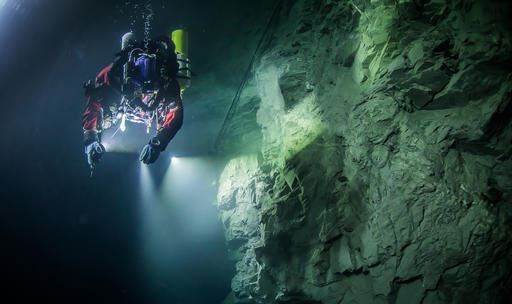 |
| In this underwater photo taken Aug. 21, 2015, in the flooded Hranicka Abyss, Czech Republic, Polish explorer Krzysztof Starnawski is seen examining the limestone crevasse and preparing for a 2016 expedition to measure it depths. On Sept. 27, 2016 Starnawski and his Polish-Czech team discovered that the cave goes 404 meters (1,325 feet) down, making it the world's deepest known flooded abyss. (Krzysztof Starnawski of the Krzysztof Starnawski EXPEDITION via AP) |
Speaking on the phone from his home in Krakow, southern Poland, Starnawski said Tuesday's discovery makes Hranice Abyss the world's deepest known underwater cavity, beating the previous record-holder, a flooded sinkhole in Italy called Pozzo del Merro, by 12 meters (39 feet).
The Czech Speleological Society said it thinks the cave is even deeper and will yield additional records. When the robot was 404 meters deep "it was as deep as its rope could go, but the bottom was still nowhere in sight," the society said.
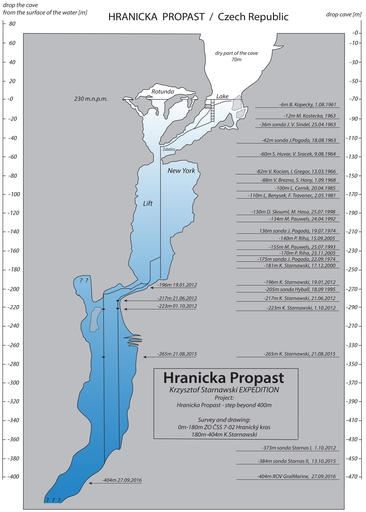 |
| This map made available to The Associated Press by Polish explorer Krzysztof Starnawski on Friday, Sept. 30, 2016, shows a cross-section of the flooded Hranicka Propast, or Hranice Abyss, in the Czech Republic that Starnawski's Czech and Polish team recently revealed to be the world's deepest known flooded cave. On Sept. 27, 2016, the team used a remotely-operated underwater robot, or ROV, to search for the cave's bottom. It went to the record depth of 404 meters (1,325 feet) but still has not found the bottom, during the 'Hranicka Propast - step beyond 400m' expedition led by Starnawski and partly funded by the National Geographic. (Krzysztof Starnawski Expedition via AP) |
Diving in the cave is a challenge, because of its muddy areas and a water temperature of 15 degrees Celsius (59 degrees Fahrenheit). The water's mineral composition also damages equipment and injures exposed skin, Starnawski said.
"But that is the only price to be paid for this discovery, and it was worth paying," he said.
A cross-section map he made of the cave ends with question marks in an unexplored area where he believes the fissure goes deeper.
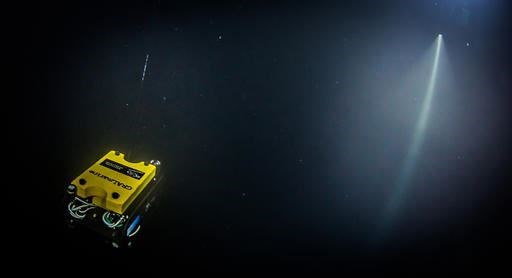 |
| In this underwater photo taken Sept. 27, 2016 in the flooded Hranicka Propast, or Hranice Abyss, in the Czech Republic a remotely-operate underwater robot, or ROV, is exploring for the cave's bottom, which it did not find, despite descending to the depth of 404 meters (1,325 feet), the length of its cord, and revealing it to be the world's deepest known flooded limestone sinkhole, during an expedition led by Polish explorer Krzysztof Starnawski, 'Hranicka Propast - step beyond 400m' that was partly funded by the National Geographic. (Krzysztof Starnawski Expedition via AP) |
On Saturday, he plans to dive to 200 meters again to bring the robot back through the narrow passage. The device was made especially for the expedition and operated by a Polish firm, GRALmarine.
Starnawski said National Geographic, which first reported the discovery, covered some of the expedition's cost.
Copyright 2016 The Associated Press. All rights reserved.
This material may not be published, broadcast, rewritten or redistributed.
Page created on 9/30/2016 6:26:08 PM
Last edited 9/30/2016 6:26:08 PM





